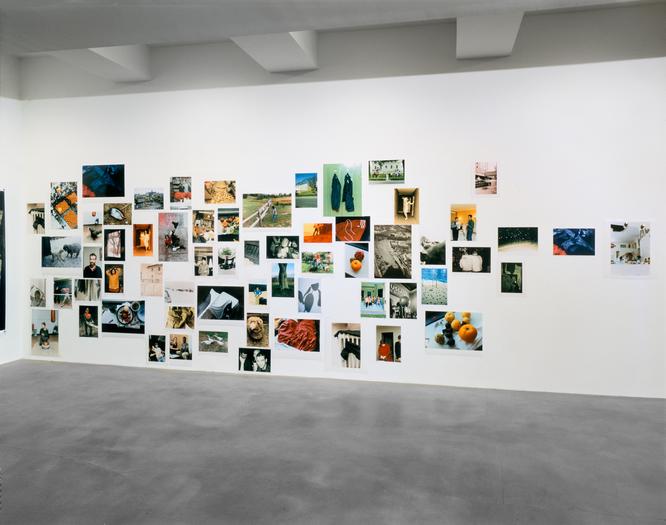Wolfgang Tillmans
September 14 – October 26, 1996
Main Gallery
Wolfgang Tillmans' new exhibition and installation of photographs at Andrea Rosen Gallery will continue to examine the boundaries between awareness, existence and experience that the artist's previous advances into both commercial and "art" photography have already begun to explore. The debate waged throughout this century over whether photography deserved to be considered a fine art may now seem like a foregone conclusion. However, it's dichotomous nature, at once ubiquitous and elevated has resulted in a medium whose nature and class remains, overwhelming accessible. It is a medium that is a thoroughly familiar (and unreliable) gauge of image, appearance and "reality"- one that is not beyond the public. Its tacit reproducibility and accessibility unleashes a powerful conundrum of familiarity and self-consciousness that clashes with painting and sculpture's precious character and "value" as property and objectivity.
As an artist and photographer Wolfgang Tillmans is well aware of the nature of photography as a record of things seen or as John Berger states a "process of rendering observation self-conscious." The implicit importance of the photographer in this relationship is his decision to record an event. In this moment the photographer is neither a detached observer nor dictatorial choreographer . Instead, a precarious balance of subjectivity and observation is channeled from the tool of the camera to the psychology of the subject. The camera as Edward Weston states "provides the photographer with a means of looking deeply into the nature of things, and presenting his subjects in terms of their basic reality" Thus, in the classic sense, Tillmans' work unites photography's heroic modernism with the mysterious humanism of late twentieth century identity. Tillmans ability to create a network of imagery both literally and metaphorically, through re-contextualization and juxtaposition of images, allows for a dialogue between memory and our ideas of "pure" representation. It is Wolfgang Tillmans' attraction to the space not only in pictures but between pictures that pushes the complexity of both a photograph's content and its nature to captivating ends.

